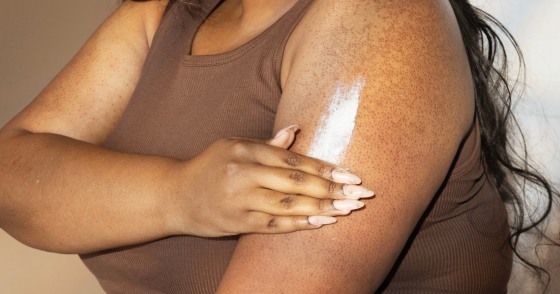
Unmasking Chicken Skin: Your Personal Journey to Silky Smoothness
Featured Snippet: Keratosis pilaris (KP), often affectionately dubbed "chicken skin," is a common skin condition that manifests as rough, bumpy patches. While treatments like moisturizers and exfoliants can help, understanding this condition can empower your skincare journey.
What Exactly is Keratosis Pilaris?
Picture this: small, stubborn bumps that pop up on your arms, thighs, or even your face—those are the telltale signs of keratosis pilaris. It’s completely benign and often fades with time, yet many of us find ourselves on a quest for that smoother skin, driven by the desire for confidence and comfort.

Understanding the Causes and Symptoms
So, what triggers this pesky condition? Keratosis pilaris occurs when keratin, a protective protein in our skin, builds up and clogs hair follicles. The result? Those familiar bumpy patches. Here’s what to watch for:
- Rough, dry skin that feels like sandpaper.
- Bumps that may be red or skin-colored.
- Commonly affected areas include the arms, thighs, and face.
Unlocking Treatment Options for Keratosis Pilaris
While keratosis pilaris isn’t curable, a multitude of treatments can help refine your skin’s texture. Let’s dive into some of the most effective options:
1. Exfoliating Lotions and Creams
Exfoliating products can be game-changers. They work to slough away dead skin cells and unveil a smoother surface. Check out these tried-and-true recommendations:
- CeraVe SA Lotion for Rough & Bumpy Skin
- Ebanel Urea Cream
- First Aid Beauty KP Bump Eraser Body Scrub
- Gold Bond Rough & Bumpy Daily Skin Therapy Cream
2. Moisturizers
Don’t underestimate the power of hydration! A robust moisturizer is your ally in battling KP. I highly recommend the Pathraya Herbal Soothing Shower Gel. Its gentle formula, enriched with mugwort and mint, cleanses without stripping your skin’s natural moisture, a must for anyone with KP.

3. Lifestyle Changes
Sometimes, the little tweaks make the biggest difference. Consider these lifestyle tips to help manage keratosis pilaris:
- Use warm water instead of hot when showering to prevent drying out your skin.
- Avoid harsh soaps that can irritate sensitive areas.
- Moisturize immediately after bathing to lock in hydration.
A Personal Touch: Real-World Experiences
As someone who has battled KP, I can vouch for the effectiveness of a dedicated exfoliation and moisturizing routine. The right products made a tremendous difference in my skin’s texture and appearance. It’s more than just skincare; it’s about feeling good in your skin.
Your Questions Answered
What’s the best lotion for keratosis pilaris?
Look for lotions with exfoliating ingredients like salicylic acid or urea. CeraVe SA Lotion and Ebanel Urea Cream are excellent options.
How can I treat keratosis pilaris on my face?
For facial KP, opt for gentle exfoliating products with lactic or salicylic acids, followed by a rich moisturizer.
Does glycolic acid help with KP?
Absolutely! Glycolic acid can aid in exfoliating and preventing clogged hair follicles, making it a worthy addition to your routine.
In Conclusion
Keratosis pilaris may be a common skin condition, but managing it effectively is within reach. By embracing a regimen of exfoliating lotions, rich moisturizers, and simple lifestyle adjustments, you can significantly enhance your skin’s texture. If you’re on the hunt for a gentle cleansing experience, don’t overlook the Pathraya Herbal Soothing Shower Gel.

Further Reading
For additional insights on keratosis pilaris, take a look at the Mayo Clinic's guide.
Author Bio: With over five years of experience as a skincare enthusiast and blogger, I’m dedicated to sharing valuable insights on various skin conditions and empowering others on their skincare journeys.



